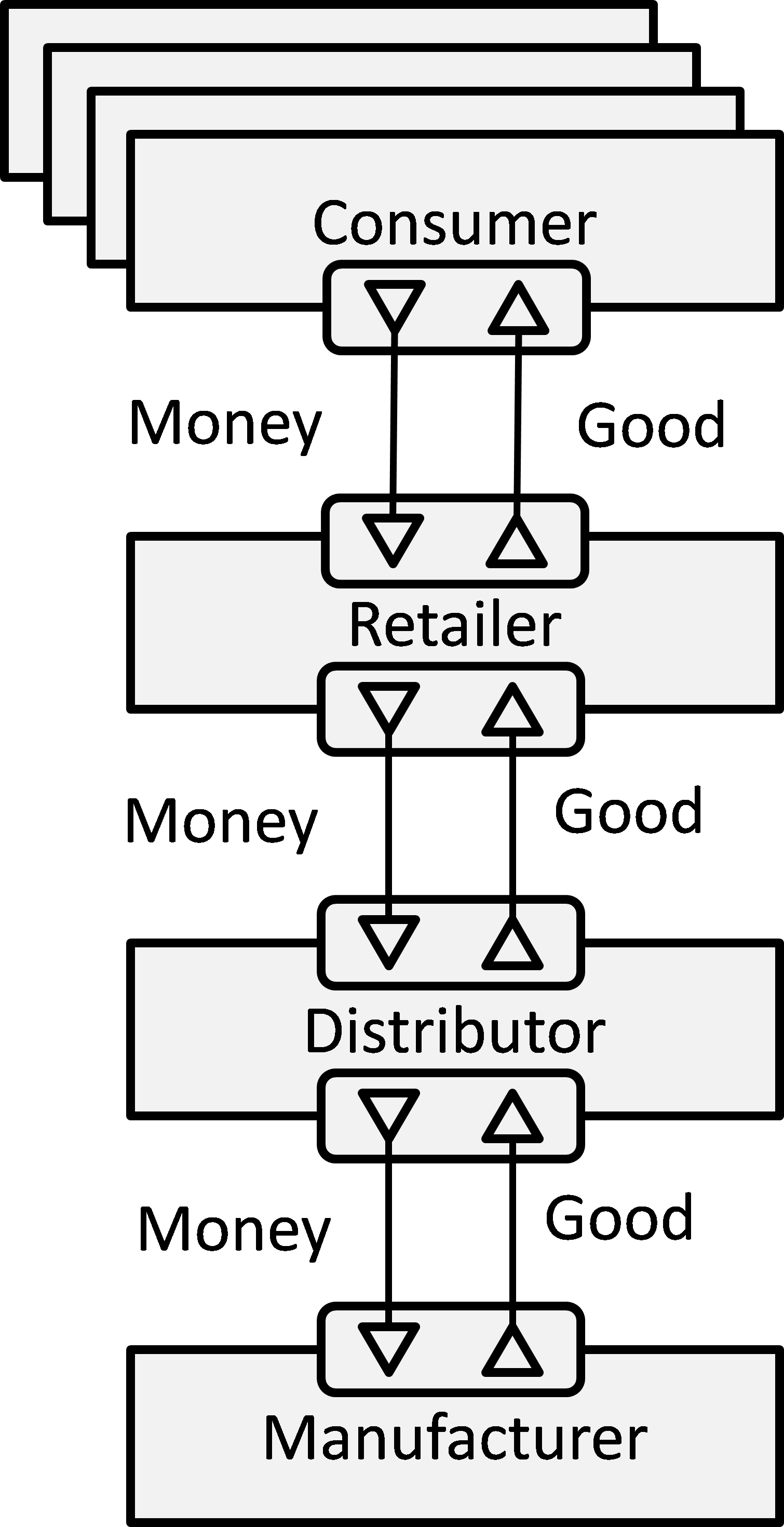This post will give more detail about the mapping of e³value to VDML.
This modeling language for evaluation of the viability of e-commerce business models or value constellations, e³value, as presented by Gordijn and Akkermans (2003), represents a group of economically independent entities, including market segments, that exchange transactions with economic value for mutual benefit. This seems straightforward, but in e-commerce the number of entities, their different interests and multiple exchanges can obscure the net value realized by the different participants. Each of the participants must have a sustainable business model for the overall exchange to be viable.

Example of e³value Model
| VDML Concept | e³value Concept | Remarks |
|---|---|---|
| Actor/collaboration | Actor | In e³value, an actor is restricted to an economically independent entity. An economically independent entity in VDML may be an actor or a collaboration. The collaboration will generally be specialized as a community (representing a set of potential actors such as a market segment) or an organization unit such as a company. |
| Business network | Composite actor | A business network may have supporting business networks. A supporting business network consists of parties working together to participate in a parent business network. |
| Business network | Constellation | A collaboration/exchange of complementary transfers of value between independent business entities. |
| Deliverable flow | Dependency element | In e³value, a flow within a business entity. In VDML, flows are between activities and roles (through activities) internally or externally. |
| Community | Market segment | A market or market segment is a community of potential parties in a business network or other collaboration. |
| Scenario | Scenario | Similar concept of applying different circumstances to evaluation of the viability of the model. |
| Activity | Value activity | Value activity is a collection of operational activities which can be assigned as a whole to actors. |
| Business network | Value interface | Not explicitly defined in VDML but is the aggregate of value propositions provided and received by one party in a business network. So a business network determines the scope of value interface of each party. |
| Business item | Value object | The thing that is provided or received, which is of economic value for at least one of the actors. |
| Value proposition | Value offering | May be a value proposition as well as a value proposition that represents the aggregation of value propositions provided or received. |
| Port | Value port | The point of departure or receipt of a value object/business item. |
| Unit of production | Value transaction | The set of value objects and transfers that represents a complete cycle of exchanges between parties in a constellation such that their net gain/loss can be assessed. |
| Deliverable flow | Value transfer | Flow of value between business entities (actors in e³valueor parties in VDML). |
Gordijn, J. and Akkermans, H., Value based requirements engineering: Exploring innovative e-commerce ideas. In Requirements Engineering Journal, Vol. 8(2):114-134, 2003, http://e3value.few.vu.nl/docs/bibtex/pdf/Gordijn2003e3value.pdf, or a popular version of it: http://e3value.few.vu.nl/docs/bibtex/pdf/Gordijn2001e3value.pdf.

